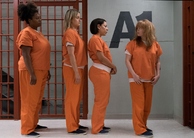The Desperate Drive for Perfection: Changing Beauty Ideals and Women's Fashion in the 1920s
By
2015, Vol. 7 No. 02 | pg. 2/2 | « As physical beauty became the standard to which everyone strove for, America’s experience of the aging process began to change.59 The emerging consumer culture viewed old age as an obstacle, unable to be escaped but able to evaded, at least for a little while longer. Advertisements exposed old age as a disease and, like plainness, recommended various products to address the issue.60 The Noron Tinting Method was advertised to be able to fix gray hair while the White Cross Vibrator was recommended for improving circulation. Various creams and ointments were also urged on the public for the wonders they could do for wrinkles and sagging skin. As scores of products were propagated for their ability to turn back the hands of time, it was unacceptable for anyone to bow down to the damaging effects of aging.61 For those born with physical deformities, blending in with society was not an option. The growing practice of cosmetic surgery offered an end to such dilemmas. Individuals that had grown to adulthood loathing their personal deficiencies had their confidence restored by a successful surgery. Abnormalities such as hare-lips or lop-ears were able to be fixed by surgeons, sometimes even in infants.62 Deformities sustained in accidents were also able to be reversed through cosmetic procedures. As automobiles grew in popularity, so did the incidences of automobile accidents. People who had sustained injuries that would have earlier left them disfigured for life found that their scars and defects could largely be erased by a cosmetic procedure. These instances not only repaired the damage to the physical body, but also helped mend the damage done to a person’s self-worth after suffering from a stigmatizing defect.63 Although cosmetic surgery has become quite common in society’s pursuit of beauty, it began as an effort by surgeons to address the abhorrent physical damage sustained by soldiers during World War I. During World War I, soldiers from the front returned with the most heinous of injuries.64 Surgeons began to question if surgery could be beneficial to “women whose faces had been ravaged by nothing more explosive than the hands of the passing years.”65 Prior to the turn of the century, there was a clear distinction between cosmetic and reconstructive surgery. Cosmetic surgery was largely disdained by reputable surgeons and was met with suspicion by an uneasy American public. This profession “contradicted both the traditional American injunction against vanity and the Hippocratic injunction against doing harm,” causing its very purpose to be called into question.66 Critics argued that not only was “[performing] a dangerous operation on a healthy body in the name of beauty” immoral and unethical, it had no place in the respected field of medicine.67 This hesitation was soon discarded as the twentieth century became consumed with youth and beauty.68Proponents of the emerging specialty refuted these claims by citing the good that came of cosmetic surgery. As the world became obsessed with beauty, women not blessed with good looks were said to be susceptible to madness and suicide if cosmetic surgery did not lend its helping hand. Such was the case of Suzanne Geoffre, a Parisian woman who underwent a risky procedure to rid her calves of excess fat. Many other women joined her in this radical endeavor to “fix” their appearances.69 Dr. Suzanne Noel, a French cosmetic surgeon and pioneer in her field, made a strong case for the usefulness of cosmetic surgery. Rather than being a promotion of vanity, Dr. Noel argued that cosmetic surgery restored people’s confidence and self-worth as well as helping them reach their potential in both their social and professional lives.70 Having gained significant experience treating soldiers in the First World War, Dr. Noel emphasized the economic repercussions that physical disability had on an individual.71 Soldiers returning home needed to be sure that employment would be waiting on them so that they would be able to support themselves and their families.72 The same economic stability was needed by ordinary men and women not affected by war.73 In her manuscripts, Dr. Noel cites the tragic cases of women becoming the central earner in their homes and being unable to gain employment because of their looks. She cites one woman in particular whose husband walked out on her, leaving her with the burden of providing for their children alone. Although she was qualified for work as a housekeeper, a scar on her face kept her from securing employment. After undergoing a procedure to remove the blemish, Dr. Noel reported that the woman quickly found work and was quite happy with the results of the operation.74 She cited another case concerning an older woman, formerly the manager of a luxury goods store, being forced out of her position because of her visibly aging face. After undergoing rejuvenating procedures, the woman soon found herself happily employed once again. Professional men shared the same plight. As men approaching their sixties were being edged out of the workforce, many found that their jobs were in jeopardy. After undergoing face-lift and skin smoothing procedures, they found they were able to keep their jobs and command more respect in the workplace. Dr. Noel and her contemporaries made a strong case for their services as the public and the workplace became increasingly fixated upon youth.75 This drive to create the perfect representation of one’s self lurks not only in the discontented looks lingering in women’s mirrors, but also in the plots of literature and television. The paradox of such an obsession is the subject of a particularly chilling episode of The Twilight Zone, “The Eye of the Beholder.” The episode centers around a patient concealed by bandages, anxiously awaiting the outcome of her eleventh surgery on her face. Anticipating the results hidden under the bandages, she reveals that she “never really wanted to be beautiful, [she] just wanted people not to scream when they looked at [her].”76 Although this episode was filmed in 1960, its story illustrates the tyrannical hold beauty and social acceptance still plays in society, and has continued to hold on women desperate to meet these nearly impossible expectations.77 Its message echoes the frustration of pursuing such subjective beauty standards and also asks the audience to consider the cost of putting one’s self-worth in the hands of constantly shifting societal expectations. It is significant to note that even as the destructive consequences of chasing fleeting beauty ideals have become apparent to society, it has not quelled its appetite for perfection. In the time between the last half of the nineteenth century and the first two decades of the twentieth century, America’s perception of beauty had drastically changed. Women began actively striving for the slim, youthful figures of Hollywood’s most famous stars and adopted similar fashions to convey their beauty and appeal. Sensing the growing importance of beauty among the women of the early twentieth century, advertisements began pushing products and methods to help women achieve such ideals. Cosmetic surgery soon became relatively common among the public, offering more drastic results that commercial products could not. This desperate quest for beauty and youth was made more important as society recognized attractiveness as the key to success in nearly every aspect of life, casting an undeniable new light of competition and vanity upon twentieth century America. Endnotes1.) Martha H. Verbrugge, Active Bodies: A History of Women’s Physical Education in Twentieth-Century America, (New York: Oxford University Press, 2012), 48. 2.) June B. West, “The ‘New Woman’,” Twentieth Century Literature 1, no. 2 (1955), 55. 3.) Elizabeth Haiken, Venus Envy: A History of Cosmetic Surgery, (Baltimore: Johns Hopkins University Press, 1997), 91. 4.) Louise Klein Miller, “Dress Well—It’s Good Business,” National Business Woman 5, no. 3 (1922), 13. 5.) Louise K. Miller, “Dress Well,” 13. 6.) Carolyn Comiskey, “Cosmetic Surgery in Paris in 1926: The Case of the Amputated Leg,” Journal of Women’s History 16, no. 3 (Fall 2004), 35. 7.) Carolyn Comiskey, “Cosmetic Surgery in Paris in 1926,” 35. 8.) Elizabeth Haiken, Venus Envy, 19. 9.) Elizabeth Haiken, Venus Envy, 91. 10.) Elizabeth Haiken, Venus Envy, 2. 11.) Carolyn Comiskey, “Cosmetic surgery in Paris in 1926,” 33. 12.) Elizabeth Haiken, “The Making of the Modern Face: Cosmetic Surgery,” Social Research 67, no. 1 (2000), 82. 13.) Carolyn Comiskey, “Cosmetic Surgery in Paris in 1926,” 5. 14.) Martha H. Verbrugge, Active Bodies, 50. 15.) Carolyn Comiskey, “Cosmetic Surgery in Paris in 1926,” 5. 16.) Carolyn Comiskey, “Cosmetic Surgery in Paris in 1926,” 5. 17.) Mary Constance Ford, “Lines of Beauty,” National Business Woman 7, no. 9 (1928), 404. 18.) Martha Verbrugge, Active Bodies, 49. 19.) Martha Verbrugge, Active Bodies, 49. 20.) Martha Verbrugge, Active Bodies, 50. 21.) Gulielma F. Alsop, “Muscles vs. Beauty,” Woman’s Journal 9, no. 23 (1925), 27. 22.) Gulielma F. Alsop, “How to Have a Good Figure,” Woman’s Journal 9, no. 21 (1925), 28. 23.) Gulielma F. Alsop. “Muscles vs. Beauty,” 28. 24.) Mary Constance Ford, “Lines of Beauty,” 404. 25.) Louise Klein Miller, “Dress Well,” 13. 26.) Carolyn Comiskey, “Cosmetic surgery in Paris in 1926,” 33. 27.) Louise Klein Miller, “Dress Well,” 13. 28.) Louise Klein Miller, “Dress Well,” 13. 29.) Martha Verbrugge, Active Bodies, 57. 30.) Martha Verbrugge, Active Bodies, 49. 31.) Mabel Frazer, “Personal Beauty,” The Young Woman’s Journal 31, no. 1 (1920), 28. 32.) “Skin Beauty...,” Club Women of New York (1929/1930), 180. 33.) “Elusive Charm,” International Women’s News 19, no. 11 (1925), 156. 34.) Carolyn Comiskey, “Cosmetic Surgery in Paris in 1926,” 36. 35.) Martha Verbrugge, Active Bodies, 57. 36.) Elizabeth Haiken, Venus Envy, 96. 37.) Heather Addison, “’Must the Players Keep Young?’: Early Hollywood's Cult of Youth,” Cinema Journal 45, no. 4 (Summer 2006), 6. 38.) Laura D. Hirshbein, "The Flapper and the Fogy: Representations of Gender and Age in the 1920s," Journal of Family History 26, no. 1 (2001), 112. 39.) Heather Addison, “Must the Players Keep Young?,” 8. 40.) Heather Addison, "’Must the Players Keep Young?,” 6. 41.) Elizabeth Haiken, Venus Envy, 95. 42.) Heather Addison, “Must the Players Keep Young?,” 6. 43.) Elizabeth Haiken, Venus Envy, 91. 44.) Basil G. Englis, “Beauty Before the Eyes of Beholders: The Cultural Encoding of Beauty Types in Magazine Advertising and Music Television,” Journal of Advertising 23, no. 2 (1994), 50. 45.) Estelle B. Freedman, “The New Woman: Changing Views of Women in the 1920s,” The Journal of American History 61, no. 2 (1974), 378. 46.) Estelle B. Freedman, “The New Woman: Changing Views,” 378. 47.) Louise K. Miller, “Dress Well,” 13. 48.) Elizabeth Haiken, Venus Envy, 101. 49.) Elizabeth Haiken, Venus Envy, 102. 50.) June B. West, “The ‘New Woman,” 57. 51.) June B. West, “The New Woman,” 59. 52.) Heather Addison, “Must the Players Keep Young?,” 8. 53.) Basil G. Englis, “Beauty Before the Eyes of Beholders,” 49. 54.) Elizabeth Haiken, Venus Envy, 183. 55.) Elizabeth Haiken, “The Making of the Modern Face,” 83. 56.) Elizabeth Haiken, Venus Envy, 182. 57.) Elizabeth Haiken, “The Making of the Modern Face,” 83. 58.) Elizabeth Haiken, Venus Envy, 91. 59.) Heather Addison, "’Must the Players Keep Young?,” 3. 60.) Heather Addison, “Must the Players Keep Young?,” 5. 61.) Heather Addison, “Must The Players Keep Young?” 18. 62.) Lois M. Miller, “Surgery’s Cinderella,” National Business Woman 18, no. 7 (1939), 201. 63.) Lois M. Miller, “Surgery’s Cinderella,” 201. 64.) Elizabeth Haiken, Venus Envy, 29. 65.) Elizabeth Haiken, Venus Envy, 18. 66.) Elizabeth Haiken, “The Making of the Modern Face,” 82. 67.) Carolyn Comiskey, “Cosmetic Surgery in Paris in 1926,” 32. 68.) Carolyn Comiskey, “Cosmetic Surgery in Paris in 1926,” 32. 69.) Carolyn Comiskey, “Cosmetic Surgery in Paris in 1926,” 40. 70.) Kathy Davis, “Cosmetic Surgery in a Different Voice: The Case of Madame Noel,” Women’s Studies International Forum 22, no. 5 (1999) 474. 71.) Kathy Davis, “Cosmetic Surgery in a Different Voice,” 479. 72.) Elizabeth Haiken, Venus Envy, 32. 73.) Kathy Davis, “Cosmetic Surgery in a Different Voice,” 479. 74.) Kathy Davis, “Cosmetic Surgery in a Different Voice,” 479. 75.) Kathy Davis, “Cosmetic Surgery in a Different Voice,” 479. 76.) The Twilight Zone, season 2, episode 6, “Eye of the Beholder,” directed by Douglas Heyes, aired on November 11, 1960. 77.) Elizabeth Haiken, “The Making of the Modern Face,” 81. Suggested Reading from Inquiries Journal
Inquiries Journal provides undergraduate and graduate students around the world a platform for the wide dissemination of academic work over a range of core disciplines. Representing the work of students from hundreds of institutions around the globe, Inquiries Journal's large database of academic articles is completely free. Learn more | Blog | Submit Latest in Women's & Gender Studies |












